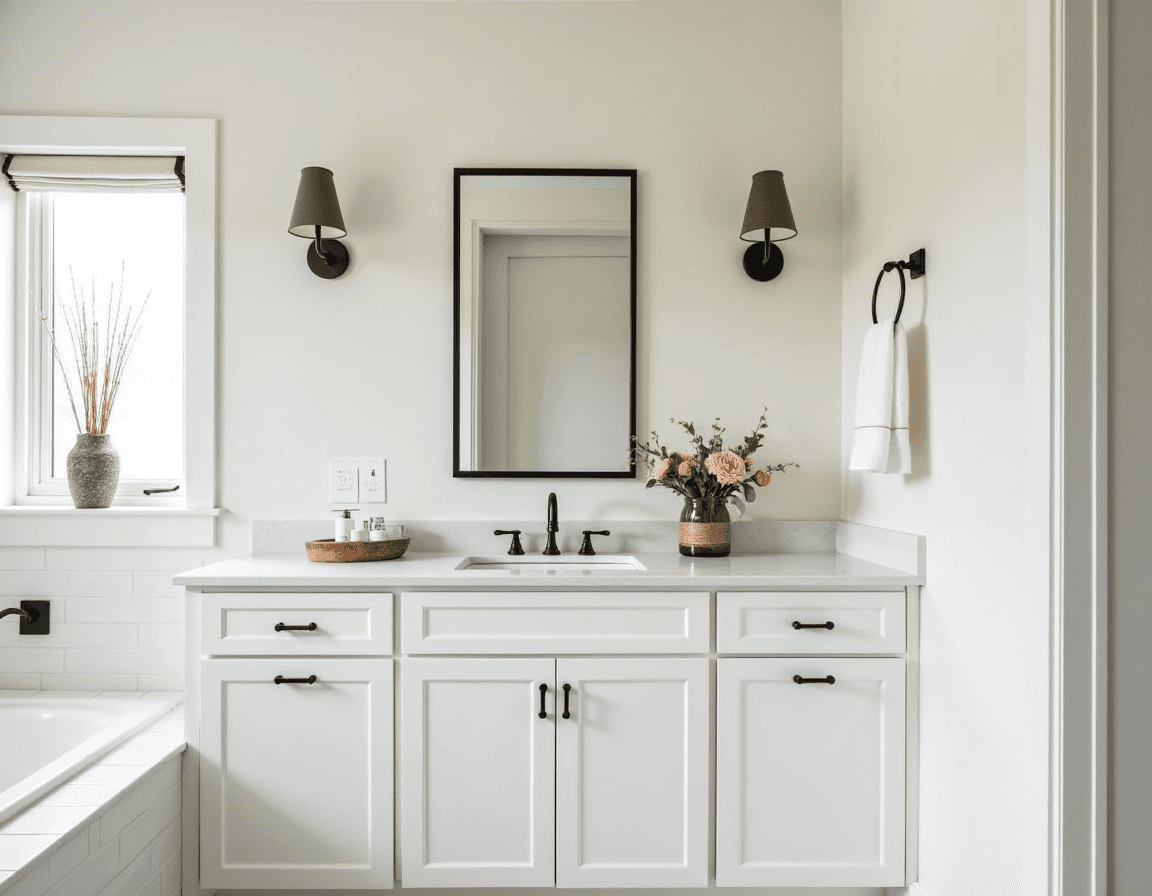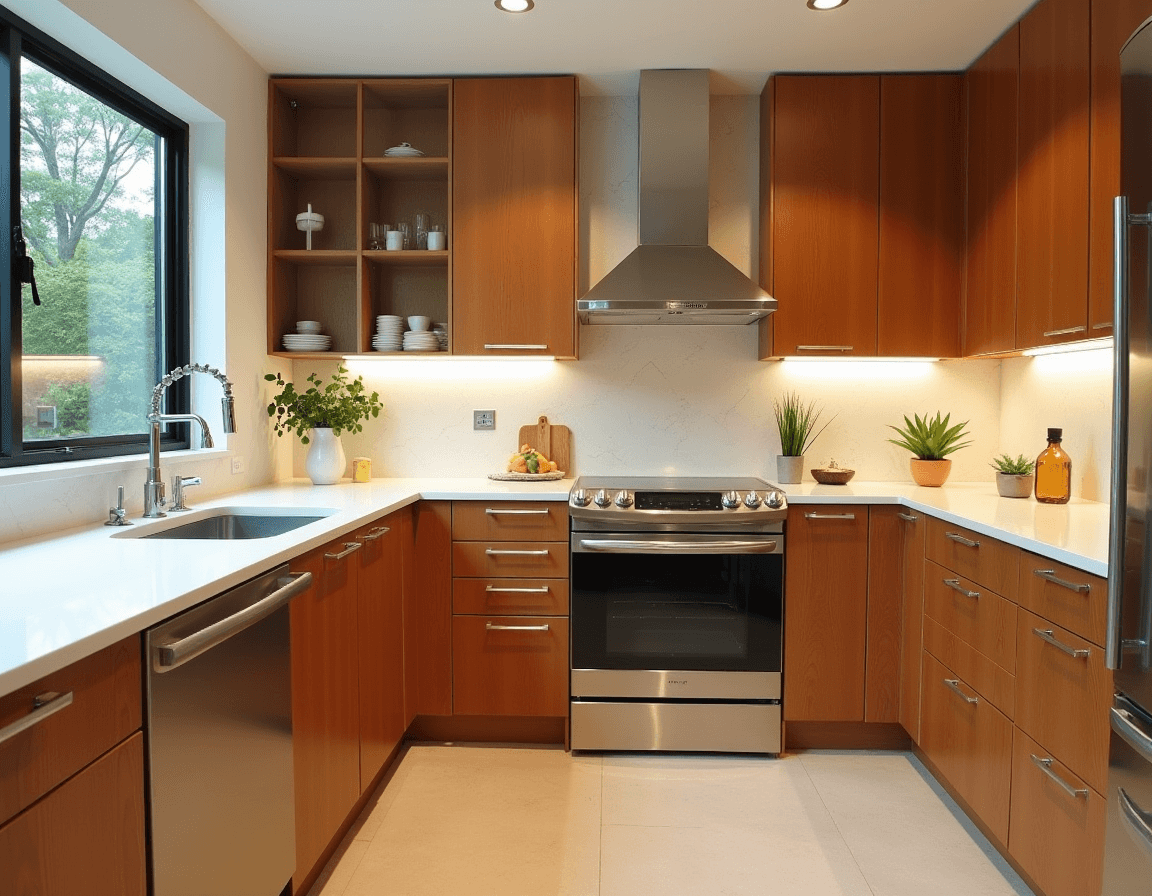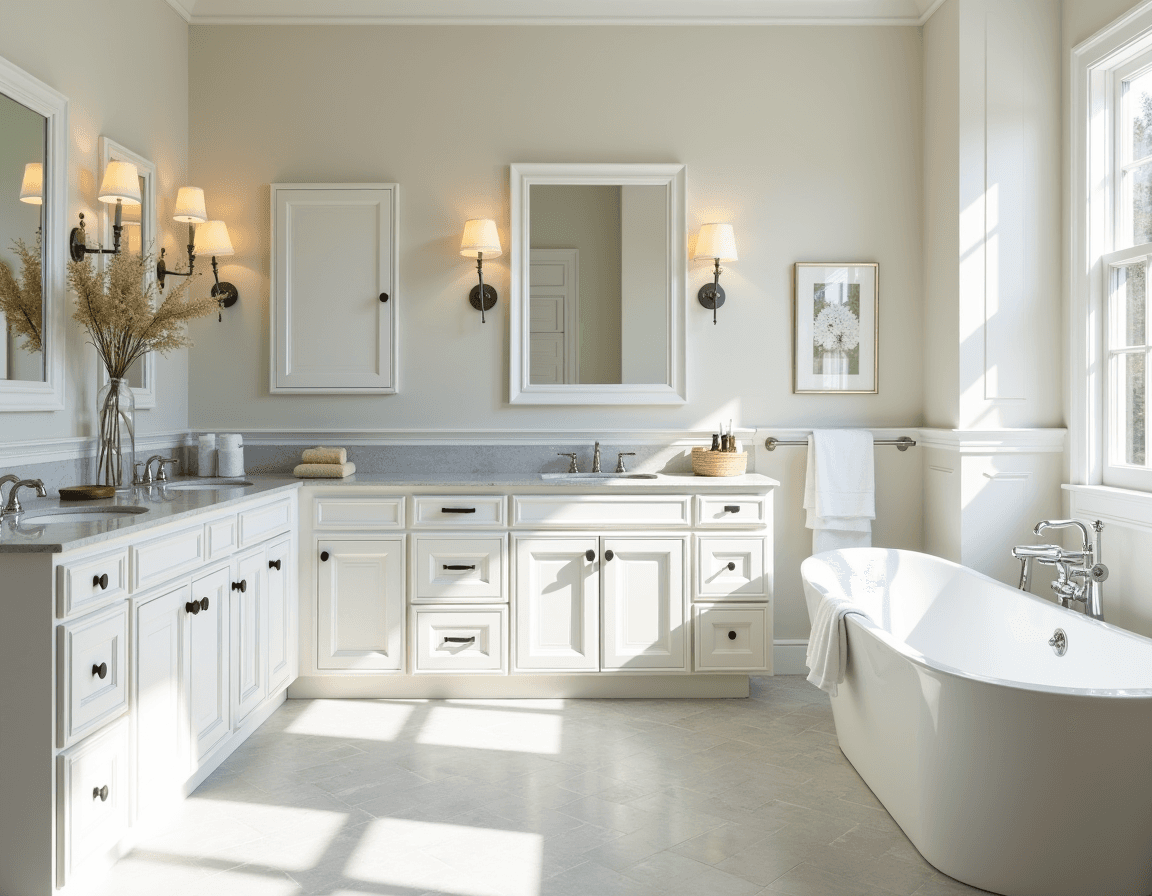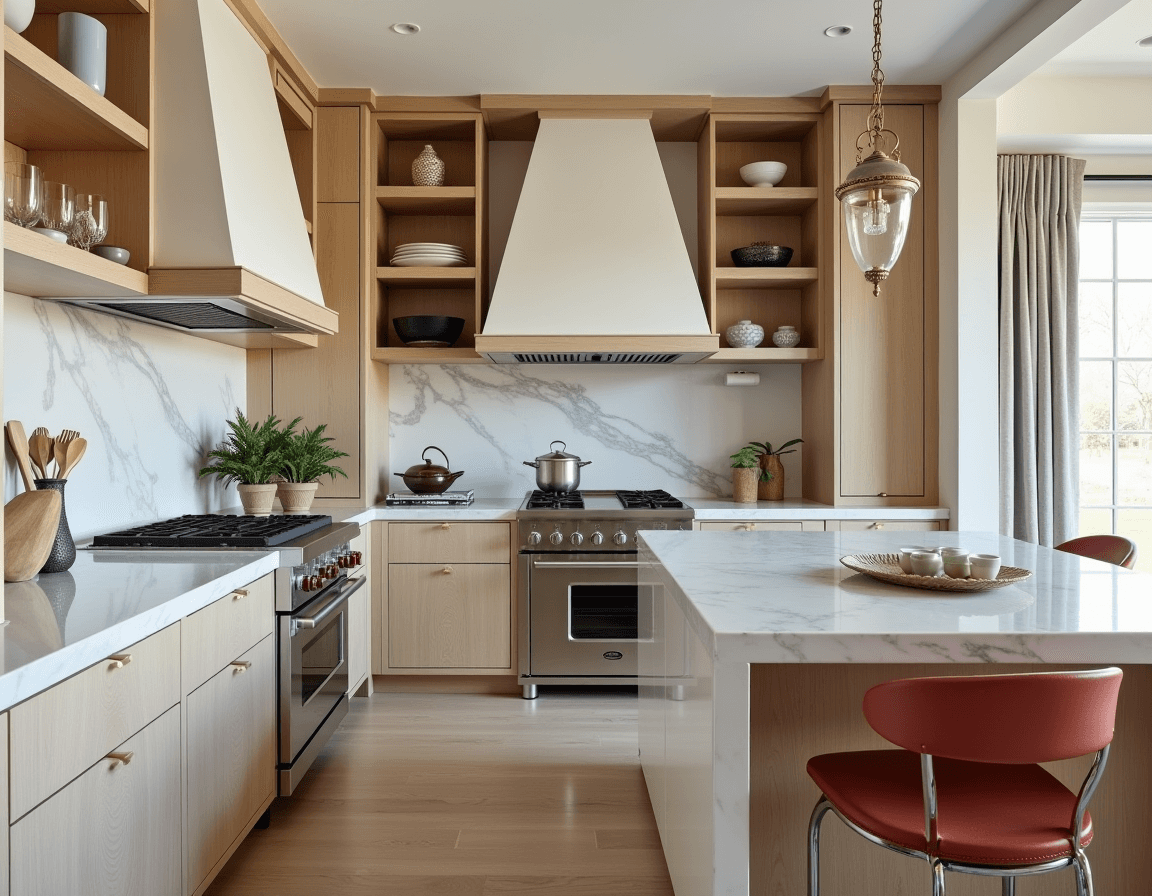May 12, 2025
•
Onton Team
Learn everything you need to know about cabinet knob placement, including expert tips for positioning handles and pulls for perfect style and function.
When it comes to designing a room, it’s easy to obsess over the big stuff — built-in cabinetry, countertops, and vanities command a lot of attention. But often, it’s the small details, like cabinet knob placement, that bring your design together. When a knob is just a little too low, or a pull is oddly off-center, you’ll feel like something’s not quite right every time you open a door.
In this guide, we’ll walk you through cabinet hardware placement essentials. You’ll get a breakdown of different hardware options, installation dos and don’ts, and practical tips to help your cabinets look sharp.
Types of cabinet hardware

Cabinet hardware might be small, but these accents can have a big personality. Whether you add ornate bohemian knobs to shaker cabinets or sleek minimalist pulls to a drawer front, the right hardware can instantly change the mood of the room — and its design functionality. Here are the most common types of cabinet hardware to consider.
Cabinet knobs
Standard cabinet knobs are the classic choice for small drawers and door panels. They require just one screw, making them easy to install and swap out when you’re ready for a quick refresh. From vintage glass to modern brass, knobs come in a multitude of styles, allowing you to add a subtle — or bold — touch without outshining the cabinet design.
Cabinet pulls
Larger door panels or heavy cabinet drawers may need a more substantial grip, making cabinet pulls a more practical choice. Unlike knobs, installing cabinet pulls requires two screws and more attention to keep them level and properly centered. They’re often installed horizontally for a cohesive, minimalist look.
Cup pulls
Cup pulls, sometimes called bin pulls, have a half-moon shape that you grip from underneath to open the door. They’re a fantastic choice for cabinet drawers, offering a comfortable way to access your storage. They’re also among the more accessible cabinet hardware options compared to knobs or pulls, especially for people with limited mobility, strength, or dexterity.
Finger pulls
Finger pulls, sometimes called tab pulls or edge pulls, are small, discreet hardware pieces that are mounted on the edge of a cabinet door or drawer front. Unlike traditional knobs and pulls, these drawer pulls sit almost flush with the cabinetry, creating a clean, sleek look. Their shape fits right into minimalist and contemporary interior design, where you want cabinet hardware that's subtle and functional. Finger pulls work wonderfully on base cabinets, and you can place them vertically or horizontally to match your personal preference.
Mix and match your cabinet hardware with Onton
Cabinet knob placement

Installing cabinet hardware isn’t exactly a science, but it does require a ruler and a few simple measurements to get the cabinet handle placement just right. Here’s what you need to know to install knobs on cabinet doors, drawers, and tall cabinets.
Knob placement on cabinet drawers
Typically, knobs on drawer fronts are centered horizontally for an even, balanced look. For small drawers, a knob in the center provides symmetry. However, for larger drawer fronts, a knob placed a few inches from the top edge allows easier access and a more ergonomic design.
Knob placement on cabinet doors
For cabinet doors, placement varies depending on whether the door is upper or lower. Jot these numbers down:
Position on upper doors: On upper doors, knobs are typically placed two to three inches from the bottom corner on the opposite side of the door hinge. On slabs, you can measure this out diagonally — meaning the knob sits two-and-a-half to three inches from either edge of the door. For panels, the knob should stay within the panel, either centered in the corner or two to three inches from the top edge.
Position on lower doors: Base cabinets follow the same two to three inch rule. To maintain visual symmetry, use the same positioning on both the upper and lower doors.
Knob placement on tall cabinets
Tall cabinet doors stick to similar rules as regular cabinet drawers. For overhead cabinetry, stick to the two to three inch rule to keep everything within reach. For lower doors, you can vertically center the knobs along the door panel. Just make sure the knob is within a comfortable reach.
Cabinet pull placement
Where to place cabinet pulls depends on the pull you use. If you opt for a standard pull or sleek-looking cup or finger pull, here’s how to install them.
Pull placement for standard and cup pulls
Traditional and cup pulls stick to the same two to three inch rule used for knobs. For cabinet doors, place the pull vertically along the center of the door. For a cabinet drawer, center the pull horizontally within the drawer front.
For larger cabinetry, you can play around a little more. With tall cabinet doors, going slightly higher on base cabinets and slightly lower on overhead cabinets can make it feel more comfortable to grab. On larger cabinet drawers, there’s more flexibility. Either center the pull or position it two to three inches from the top edge of the drawer front.
Finger pull placement
Most designers and homeowners install finger pulls in line with the corner of the door — the top corner for base cabinets and the bottom corner for overhead cabinets. Drawer pulls should be installed in the center for visual symmetry.
Size guide for cabinet knobs and pulls
Great interior design should be intentional. Choosing the right size and finish for cabinet knobs and pulls helps build a balanced, cohesive look across your cabinetry. Picture a kitchen where chic chrome door handles, knobs, and pulls echo the lustre of a ceiling-mounted pot rack — those small choices quietly tie the space together.
What size should cabinet knobs be?
Cabinet door and drawer knobs typically range between one to one-and-a-half inches in diameter. Knobs on the lower end work well for smaller drawers and narrow cabinet doors — like the type of cabinet drawers you use for utensils or spices. Larger knobs are better suited for wider cabinet doors, larger drawers, or tall cabinetry where you want a little more presence and grip. When in doubt, match the scale of the knob to the size of the door panel or drawer front.
Additionally, feel free to have fun with the knob's shape (including squares, ovals, and rectangles) and finishes (wood, crystal, acrylic) to add personal flair. Use Onton’s AI Imagine tool to visualize the perfect cabinet knob.
What size should cabinet pulls be?
Cabinet pulls should be proportional to the width of the drawer front or cabinet door. A common guideline is that the pull should be about one-third the width of the drawer. For example, a nine inch drawer front will pair well with a three inch pull. If it feels too big, size it down slightly to one-quarter the width instead.
Visualize your dream kitchen cabinetry with Onton
Dos and don’ts of cabinet hardware placement

Here’s how to make sure everything is perfectly aligned — from installing cabinet hardware to creating a cohesive look.
Do
Use hardware placement templates: Many manufacturers include templates to guide designers and homeowners in placing cabinet hardware accurately. These templates eliminate the guesswork and ensure your pulls and knobs are spaced and aligned perfectly for the cabinetry’s design.
Test placement with removable adhesive: Before you rev up that power drill, use adhesive to temporarily place knobs and pulls. Step back, snap a picture, and make sure everything looks right before drilling.
Keep style consistent: Stick to similar finishes, styles, and proportions to keep all your carpentry design intentional. Matching knobs and pulls to other decor elements (whether it’s your kitchen’s lighting fixtures or your bathroom’s paint color), creates visual harmony.
Don’t
Rush the project: Installing cabinet hardware isn’t advanced, but it’s still a precision job. Rushing through the work and ignoring important details like measuring and using a level might mean crooked pulls or holes drilled in the wrong side.
Use low-quality tools: A dull drill bit can wreck your cabinet doors. Invest in the right tools (or borrow them) to make clean, accurate holes.
Prioritize style over function: It’s tempting to choose the coolest-looking hardware, but if it’s awkward to grab or too delicate for daily use, you might regret it quickly. Always balance aesthetics with practicality.
Visualize your kitchen cabinet layout with Onton
Can’t decide between minimalist chrome pulls or woody farmhouse knobs? Onton’s easy-to-use search engine lets you find options for your new cabinet hardware before you ever grab a drill.
With Onton’s Imagine tool, you can even upload a photo of your kitchen, bathroom, or closet and then customize the look with different cabinet hardware. See exactly how your design preferences look and feel confident before you commit
Dream up the perfect cabinet for your space with Onton.

